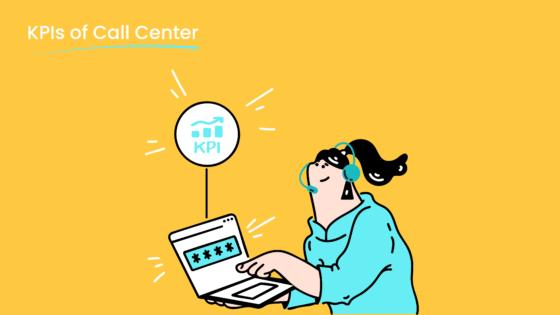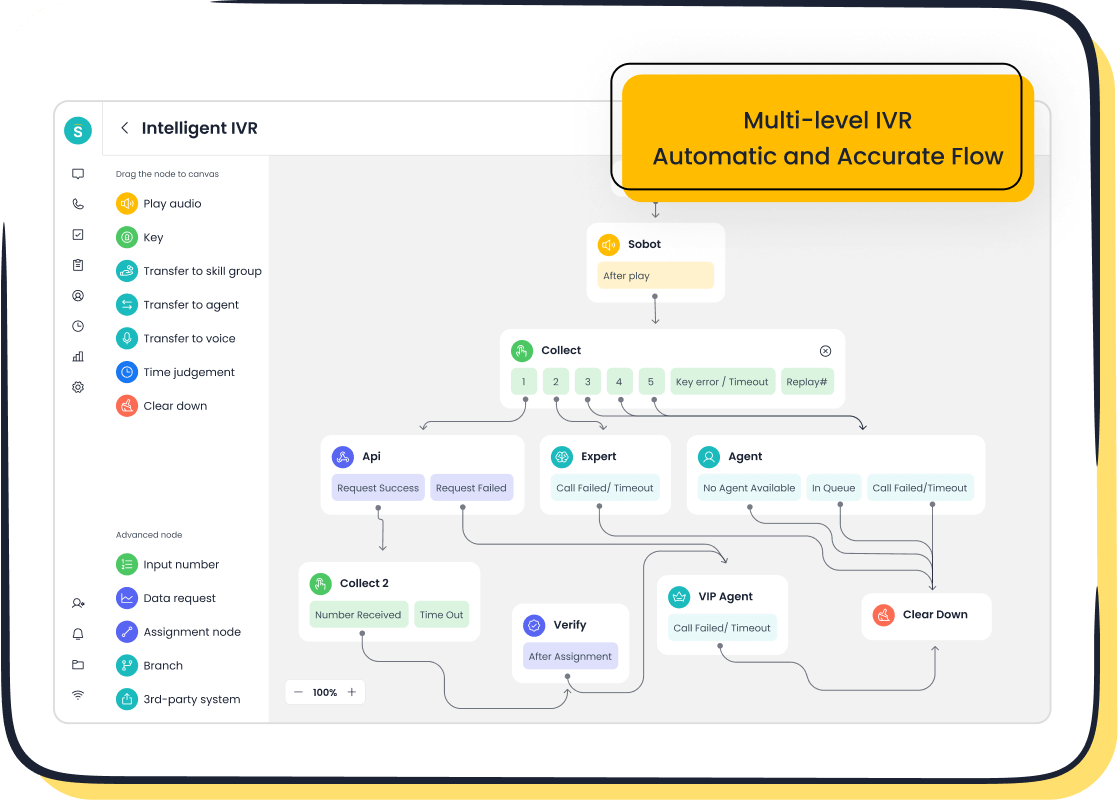The Role of Net Promoter Score Templates in Elevating Business Performance

Net Promoter Score (NPS) is a critical metric that measures how likely your customers are to recommend your business. It serves as a powerful indicator of customer satisfaction and loyalty, offering a clear glimpse into how well your business meets their expectations. Studies reveal a strong correlation between NPS and revenue growth across industries, such as an average correlation of r = .35 in 11 out of 14 sectors. This highlights how higher NPS often aligns with faster business growth.
Using a net promoter score template simplifies feedback collection and ensures consistency in analyzing customer insights. Businesses in the top NPS quartile generate 24% of their revenue from loyal customers, compared to just 9% in the bottom quartile. With tools like Sobot’s innovative solutions, you can leverage NPS to elevate customer satisfaction and drive long-term success.
Understanding Net Promoter Score (NPS)
What Is NPS and Why Does It Matter?
Net Promoter Score (NPS) is a straightforward yet powerful tool that helps you measure customer loyalty. It asks one simple question: “How likely are you to recommend our business to a friend or colleague?” This single metric provides deep insights into how your customers perceive your brand.
Why does NPS matter? Research shows that businesses with higher NPS outperform their competitors in customer retention and revenue growth. For instance:
- A 7-point increase in NPS can lead to a 1% boost in revenue growth.
- Promoters, or highly satisfied customers, generate 1.5x more revenue than detractors.
- In the B2B software sector, companies with high NPS achieve 23% higher renewal rates compared to those with low scores.
By focusing on NPS, you can identify loyal customers, address pain points, and create strategies to improve overall satisfaction.
How NPS Is Calculated
Calculating NPS is simple. After collecting survey responses, you categorize customers into three groups based on their ratings:
- Promoters (scores 9-10): Enthusiastic supporters who actively recommend your business.
- Passives (scores 7-8): Satisfied but not enthusiastic; they’re neutral.
- Detractors (scores 0-6): Unhappy customers who may harm your brand reputation.
The formula for NPS is:
Here’s an example:
| Component | Description |
|------------------|------------------------------------------|
| Promoters | 40% of respondents |
| Detractors | 10% of respondents |
| NPS Calculation | 40% - 10% = 30% |
An NPS of 30% indicates a healthy level of customer satisfaction, but there’s always room for improvement.
Promoters, Passives, and Detractors: Key Respondent Categories
Understanding the three respondent categories is crucial for interpreting your NPS results:
- Promoters are your brand advocates. They stay longer, spend more, and refer others. On average, they remain loyal 50% longer and have 2.6x higher lifetime value than detractors.
- Passives are on the fence. While they won’t actively promote your business, they’re not likely to damage your reputation either.
- Detractors are dissatisfied customers. They’re more likely to churn and discourage others from engaging with your brand.
By focusing on converting passives into promoters and addressing detractors’ concerns, you can significantly improve your NPS and overall business performance.
The Value of Net Promoter Score Templates for Customer Satisfaction

Simplifying Net Promoter Score Surveys
Creating and managing NPS surveys can feel overwhelming, but a well-designed net promoter score template makes the process seamless. These templates streamline survey creation by offering pre-built structures tailored to your business needs. You can focus on collecting actionable insights instead of worrying about formatting or design.
For example, companies like Pranamat have achieved remarkable results by automating their NPS feedback collection. With a 90% survey completion rate, they converted 32% of their NPS Promoters into program affiliates, boosting customer engagement and loyalty. This success highlights how a structured approach to measuring NPS can lead to tangible business outcomes.
To simplify your surveys further, follow these best practices:
- Send surveys to the right audience at the right time.
- Keep the process easy to navigate.
- Use concise and relevant questions to ensure high response rates.

Sobot’s solutions, such as its Voice/Call Center, integrate seamlessly with NPS templates. This integration allows you to automate survey distribution and collect feedback efficiently, ensuring you never miss an opportunity to understand your customers better.
Ensuring Consistency Across Feedback Channels
Consistency is key when collecting feedback from multiple channels. A net promoter score template ensures that your surveys maintain the same structure and tone, whether they’re sent via email, in-app prompts, or social media. This uniformity helps you gather reliable data and compare NPS scores across different customer touchpoints.
Businesses that adopt structured survey designs and automated tools see measurable benefits. For instance:
| Method | Description |
|---|---|
| Multi-Channel Feedback | Collect feedback through various channels like in-app prompts, email surveys, and social listening. |
| Structured Survey Design | Design surveys that are clear and concise to maximize response rates and minimize survey fatigue. |
| Automated Analysis Tools | Utilize AI and ML technologies for processing large volumes of feedback efficiently. |
Sobot’s omnichannel solution excels in this area. It consolidates customer interactions across platforms, ensuring your NPS surveys reach the right audience with consistent messaging. By leveraging tools like sentiment analysis and text analytics, you can uncover deeper insights into customer sentiment and behavior.
Saving Time and Resources for Businesses
Manually managing NPS surveys can drain your time and resources. A net promoter score template eliminates this inefficiency by automating repetitive tasks, allowing you to focus on strategic decision-making. Businesses that implement these templates report significant improvements in customer retention and operational efficiency.
Consider these measurable benefits:
| Benefit | Description |
|---|---|
| Improved Customer Retention | Businesses can retain more clients by addressing feedback promptly, thus reducing churn rates. |
| Categorization of Feedback | Sorting feedback helps identify key service aspects that customers appreciate the most. |
| Opportunity to Win Back Customers | Quick responses to negative feedback can convert Detractors into Promoters, enhancing loyalty. |
PowerUs, for example, uses NPS as a key performance indicator to align with customer sentiment. This approach has proven invaluable for product development and customer satisfaction. Similarly, Sobot’s Voice/Call Center offers features like automated outbound tasks and real-time monitoring, helping you save time while improving the quality of your NPS data.
By adopting a net promoter score template, you not only simplify the process of measuring NPS but also unlock opportunities to enhance customer satisfaction and loyalty. With tools like Sobot’s integrated solutions, you can turn feedback into actionable insights that drive growth.
How NPS Templates Drive Business Performance

Enhancing Customer Retention and Loyalty
Net Promoter Score (NPS) templates play a pivotal role in helping you increase customer retention and loyalty. By consistently measuring customer satisfaction, you can identify at-risk customers and address their concerns before they churn. High NPS scores signal that your business is meeting customer expectations, which is essential for retention.
When you use NPS templates, you gain actionable insights that allow you to improve service interactions. For example, analyzing feedback helps you pinpoint areas where your customers feel underserved. Addressing these gaps not only boosts satisfaction but also strengthens loyalty.
Tip: Regularly monitor NPS to reduce churn rates and prioritize improvements in customer interactions.
Consider this: NPS promoters are 4.2 times more likely to buy again, making them invaluable for predictable revenue streams. Additionally, reducing churn by just 15% can save millions in acquisition costs. With NPS templates, you can focus on converting detractors into promoters and passives into loyal advocates, ensuring long-term retention.
Identifying Opportunities for Customer Experience Improvement
NPS templates don’t just measure satisfaction; they help you uncover opportunities to enhance the customer experience. By analyzing feedback, you can identify pain points and areas for improvement. Companies like Apple and Slack have leveraged NPS data to refine their services and products, resulting in better customer experiences.
For instance:
- Apple uses NPS to improve its Genius Bar services, ensuring exceptional in-store experiences.
- Slack analyzes NPS feedback to develop features that meet customer needs, boosting user retention.
- American Express identifies service pain points through NPS, leading to targeted training programs for its teams.
These examples highlight how NPS templates can guide you in making strategic decisions that elevate customer satisfaction. Whether it’s refining your product offerings or enhancing service quality, the insights gained from NPS feedback are invaluable.
Note: High NPS scores are linked to increased customer retention and brand awareness, making them a powerful tool for improving customer experiences.
Boosting Revenue Growth Through Satisfied Customers
Satisfied customers are the backbone of revenue growth, and NPS templates help you harness their potential. Promoters, who are highly satisfied customers, generate more revenue than detractors. A 10-point increase in NPS correlates with a 3.2% boost in upsell revenue, proving that happy customers are more likely to spend more.
Here’s how NPS impacts revenue growth:
- Subscription Renewal Rates: Promoters are far more likely to renew subscriptions, ensuring predictable revenue streams.
- Customer Lifetime Value (CLTV): Companies with top-quartile NPS scores enjoy a 13% higher CLTV, contributing significantly to long-term growth.
- Organic Growth: NPS explains 20% to 60% of the variation in organic growth rates, showing that businesses with higher scores grow faster than competitors.
| Metric | Description | Business Outcome |
|---|---|---|
| Upselling and Cross-Selling | A 10+ point NPS increase correlates with a 3.2% upsell revenue boost. | Happy customers are more likely to spend more, directly impacting revenue growth. |
| Subscription Renewal Rates | NPS promoters are 4.2 times more likely to buy again. | Higher NPS leads to increased customer retention and predictable revenue streams. |
| Customer Lifetime Value | Companies with top-quartile NPS scores have a 13% higher CLTV. | Loyal customers contribute significantly to long-term revenue growth. |
| Churn Reduction | Reducing churn by 15% can save millions in acquisition costs. | Lower churn rates enhance profitability and reduce the need for costly customer acquisition. |
| Revenue Increase | A 7-point increase in NPS corresponds to a 1% revenue increase. | Improvements in NPS can lead to measurable increases in revenue, supporting overall growth. |
Satisfied customers also drive word-of-mouth referrals, which are essential for sustainable growth. Airbnb’s analysis of 600,000 guests revealed that two-thirds of feedback came from promoters, who were more likely to book again and refer others. By leveraging NPS templates, you can turn satisfied customers into brand ambassadors, fueling both revenue growth and customer acquisition.
Implementing NPS Templates Effectively with Sobot
Choosing the Right Net Promoter Score Template for Your Needs
Selecting the right net promoter score template is essential for gathering actionable insights. You need a template that aligns with your business goals and customer touchpoints. Customizable survey templates allow you to tailor questions to your audience, ensuring the feedback you collect is relevant and meaningful.
For example, if your business operates across multiple regions, you can use templates that incorporate localized questions. This approach helps you understand cultural nuances and customer preferences. Sobot’s solutions simplify this process by offering templates that integrate seamlessly with your existing systems. These templates ensure your net promoter score surveys are consistent and easy to deploy across channels.
Tip: Choose templates that support multi-channel feedback collection, such as email, voice, and social media. This ensures you capture insights from every customer interaction.
By using the right template, you can maximize response rates and gain deeper insights into customer satisfaction.
Integrating NPS Surveys with Sobot’s Voice/Call Center
Integrating nps surveys with Sobot’s Voice/Call Center transforms how you collect and analyze feedback. The platform’s intelligent IVR system allows you to automate survey distribution after customer interactions. This ensures you gather real-time insights without disrupting your workflow.
Sobot’s Voice/Call Center offers features like call tracking and AI-powered voicebots, which enhance the efficiency of your surveys. For instance, after a support call, the system can automatically trigger an nps survey to assess the customer’s experience. This immediate feedback helps you identify service gaps and improve interactions.
Example: A retail company using Sobot’s Voice/Call Center reduced customer churn by 20% by addressing detractor feedback collected through automated surveys.
With Sobot’s tools, you can streamline survey management and focus on improving customer satisfaction.
Leveraging NPS Data for Strategic Decision-Making
Net promoter score data is a goldmine for strategic planning. By analyzing survey results, you can identify trends and make informed decisions that drive growth. For example, tracking NPS as a leading indicator of churn helps you predict revenue loss and take proactive measures.
Sobot’s solutions provide advanced analytics to help you interpret NPS data effectively. You can use performance indicators like churn rates, renewal rates, and LTV:CAC ratios to refine your strategies.
| Performance Indicator | Description |
|---|---|
| Churn | NPS predicts potential revenue loss by identifying dissatisfied customers. |
| LTV:CAC | Promoters have higher lifetime value, improving revenue projections. |
| Renewal Rates | Higher NPS correlates with better renewal rates, signaling customer loyalty. |
By leveraging these insights, you can prioritize improvements that enhance customer retention and loyalty. Sobot’s unified workspace consolidates survey data, making it easier to align your strategies with customer sentiment.
Call to Action: Use Sobot’s tools to turn NPS data into actionable strategies that boost satisfaction and revenue.
Addressing Challenges in Using NPS Templates
Overcoming Low Response Rates
Low response rates can undermine the effectiveness of your Net Promoter Score surveys. To address this, you need to focus on building strong relationships with your customers. Research shows that businesses with established customer relationships achieve response rates of up to 100%, while those with unknown relationships see rates as low as 3%.
To improve response rates, consider these strategies:
- Apply direct marketing practices to personalize survey invitations.
- Use technology to optimize email delivery and timing.
- Enhance the quality of your contact list to ensure you’re reaching the right audience.
Timing also plays a critical role. Sending surveys shortly after a customer interaction captures their sentiment while it’s still fresh. Multi-channel distribution further boosts participation by allowing customers to respond through their preferred platforms, such as email or SMS.
| Relationship Quality | Expected Response Rate |
|---|---|
| Unknown relationship | 3% or less |
| Established relationship | Up to 100% |
By implementing these methods, you can significantly increase response rates and gather more reliable customer feedback.
Avoiding Misinterpretation of NPS Data
Interpreting NPS data incorrectly can lead to misguided decisions. To avoid this, you should adopt analytical tools that provide deeper insights into customer satisfaction. For example, segmenting NPS data by pre-delivery and post-delivery experiences helps you identify specific areas for improvement.
Other effective methodologies include:
- RFM Segmentation: Categorize customers based on Recency, Frequency, and Monetary value to tailor your strategies.
- Pre-delivery vs Post-delivery NPS: Compare satisfaction levels before and after service delivery to pinpoint experience gaps.
| Analytical Methodology | Description |
|---|---|
| Segmentation of NPS Data | Analyze NPS from different angles, such as pre-delivery and post-delivery. |
| RFM Segmentation | Identify valuable customer groups to enhance their experiences. |
| Pre-delivery vs Post-delivery NPS | Measure satisfaction at different stages to uncover service gaps. |
Using these approaches ensures that your NPS data drives meaningful, customer-centric business improvements.
Combining NPS with Other Customer Feedback Metrics
Relying solely on NPS limits your understanding of the customer experience. Combining NPS with other customer feedback metrics, such as CSAT (Customer Satisfaction Score) and CES (Customer Effort Score), provides a more comprehensive view of customer sentiment.
For example, integrating NPS with churn rate analysis helps you predict and prevent customer attrition. Businesses that combine multiple customer experience metrics report a 20% improvement in overall satisfaction.
| Metric Combination | Benefit |
|---|---|
| NPS + CSAT + CES + Churn Rate | Offers a holistic view of customer sentiment. |
| Multiple CX Metrics | Leads to a 20% improvement in customer satisfaction. |
By leveraging multiple metrics, you can create a well-rounded strategy that enhances satisfaction and strengthens your customer-centric business approach.
Net Promoter Score templates are transformative tools for measuring customer loyalty and improving client satisfaction. They simplify feedback collection, help you identify service strengths, and enable you to address detractor concerns effectively. For instance, 89% of customers switch to competitors after a poor experience, underscoring the importance of responding to negative feedback. By leveraging these templates, you can enhance customer loyalty and satisfaction, driving measurable business growth.
Acting on NPS insights is essential. Sorting feedback helps you pinpoint areas for improvement, while combining qualitative and quantitative data offers a complete view of customer sentiment. Businesses using Sobot’s Voice/Call Center have achieved remarkable results, including a 20% reduction in inbound discussions and a 96% satisfaction rate.

Sobot’s integrated solutions, like its omnichannel platform and AI-powered tools, streamline NPS implementation. These tools not only improve operational efficiency but also help you enhance customer loyalty. Start optimizing your NPS strategy with Sobot today to unlock sustainable growth and long-term success.
FAQ
What is the best way to track net promoter score effectively?
You can track net promoter score by using automated tools like Sobot’s Voice/Call Center. These tools streamline survey distribution and collect real-time feedback. Automation ensures you never miss critical insights, helping you focus on improving customer satisfaction and loyalty.
How do you calculate net promoter score?
To calculate net promoter score, subtract the percentage of detractors (scores 0-6) from the percentage of promoters (scores 9-10). For example, if 50% are promoters and 20% are detractors, your NPS is 30. This simple formula provides a clear measure of customer loyalty.
Why is referral behavior important for business growth?
Referrals drive organic growth by bringing in new customers at a lower acquisition cost. Promoters, who are highly satisfied customers, often refer others. This behavior not only boosts revenue but also strengthens your brand’s reputation, making referrals a key driver of sustainable success.
What is the NPS impact on revenue?
NPS directly influences revenue. A 10-point increase in NPS can lead to a 3.2% boost in upsell revenue. Promoters spend more, renew subscriptions, and refer others, creating a ripple effect that drives long-term growth and profitability for your business.
How can Sobot help improve your NPS strategy?
Sobot’s solutions, like its Voice/Call Center, automate survey management and provide actionable insights. These tools help you address customer concerns quickly, convert detractors into promoters, and enhance overall satisfaction. With Sobot, you can optimize your NPS strategy for measurable growth.
See Also
Enhancing Call Center Efficiency Through Effective Monitoring
Round-the-Clock Live Chat Support Drives Business Growth
Enhance SaaS Customer Support Using Live Chat Techniques